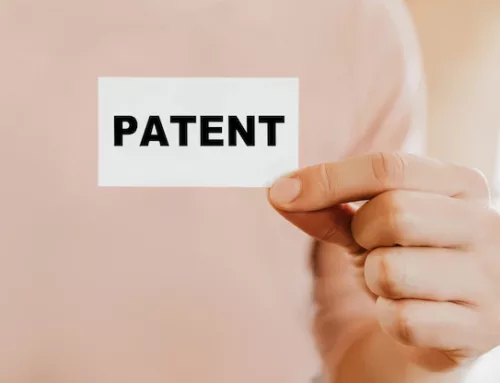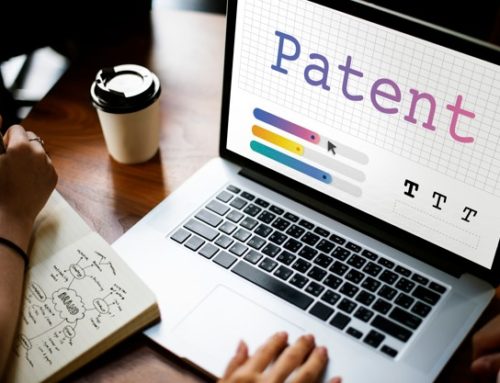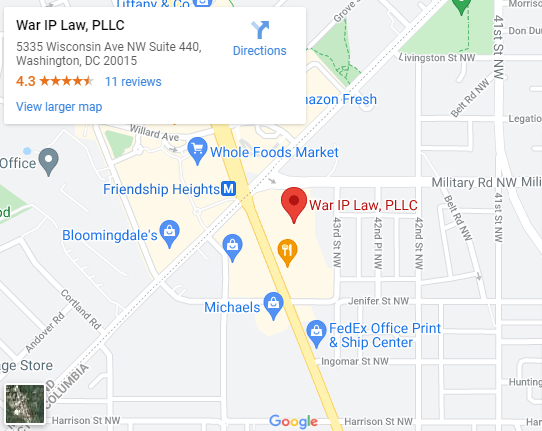A patent is important because it can help safeguard your invention. It can protect any product, design, or process that meets certain specifications according to its novelty, utility, and non-obviousness. There are two types of patent applications – provisional and non-provisional. These two patent applications have different requirements and create different aspects of patent protection. It is advisable to consult a Washington, D.C. IP attorney to help you in filing a patent application.
This article will focus on the basics of the provisional patent application. Here are some questions that will be answered in this article:
- How Can I Protect My Invention from Being “Stolen”?
- What Is a Provisional Patent Application?
- How Do I File for a Provisional Patent Application?
- What Is a Nondisclosure Agreement?
- What Is the Difference Between a Provisional Patent Application and a Regular Patent Application?
- What Is the Role of an IP Attorney?
How Can I Protect My Invention from Being “Stolen”?
If you develop a novel invention—or conceive of an idea for an invention—you may be worried that someone else might steal it from you.
Let’s say that you have created a potentially marketable invention. To make money from your original invention, you need to find a manufacturing partner or distributor who will invest in mass producing, advertising, and selling it.
Most potential manufacturing partners can be trusted to play fair; however, it is difficult to rely solely on trust. This fear is present when it comes to finding manufacturing partners, as they learn about your concept, and present them with detailed instructions on how to make and use it before it hits the marketplace.
There are two common strategies to help you protect your invention – file a provisional patent application and use a nondisclosure agreement.
What is a Provisional Patent Application?
 A provisional patent application is a document issued by the United States Patent and Trademark Office (USPTO) that protects your new invention from being copied or stolen within one year before a formal patent application is filed. This patent process is considered a cost-effective and flexible method to acquire a filing date and patent-pending status for an invention.
A provisional patent application is a document issued by the United States Patent and Trademark Office (USPTO) that protects your new invention from being copied or stolen within one year before a formal patent application is filed. This patent process is considered a cost-effective and flexible method to acquire a filing date and patent-pending status for an invention.
A provisional patent application is not an actual patent. It gives temporary protection to an invention and requires less expense, time, and effort compared to a formal patent application. This is ideal for inventions that may need future revisions, amendments, and development.
How Do I File for a Provisional Patent Application?
If your invention qualifies for a patent, it is highly recommended to file a provisional patent application and obtain a “patent pending” status. The “patent pending” label on a product indicates that a patent application—whether provisional or non-provisional—has been submitted.
A provisional patent application consists of detailed descriptions (in English), sketches, and illustrations that explain the invention’s design and purpose. It usually consists of ten pages or less.
The USPTO does not examine provisional patent applications. Therefore, it’s your responsibility to ensure that you sufficiently describe the invention. It is highly recommended to seek legal help from a competent Washington, D.C. IP lawyer to help you prepare your provisional patent application.
The application should explicitly answer the following questions:
- What is the invention?
- How is the invention made?
- How is the invention used?
Once it’s submitted, you can now establish an effective filing date for your invention and you may now use the label “patent pending” for one year from that filing date. You may start engaging in marketing, selling, and fundraising for the invention described in your provisional application.
If you file a regular patent application within one year of filing a provisional patent application, you can claim the original filing date of the provisional patent application to assert that your invention was made before other similar inventions.
What is a Nondisclosure Agreement?
If your invention idea is not patentable, the most effective way to protect its secrecy is to have prospective manufacturers sign a nondisclosure agreement before you reveal your invention. This document is called an “NDA” or a “confidentiality agreement,”.
A nondisclosure agreement is a legally binding contract that establishes a confidential relationship. The parties involved in signing this document agree that any sensitive information they may know and obtain will not be disclosed to third parties. If anyone signs a nondisclosure agreement and later uses your secret without permission or authorization, you can sue for damages.
What is the Difference Between a Provisional Patent Application and a Regular Patent Application?
It is cost-effective.
The provisional patent application costs $65 for a qualifying micro-entity, $130 for a small entity, and $260 for a large company. It is cheaper than a regular patent application.
It is easier.
Applying for a provisional patent can save you from the complications involved in applying for a formal patent. You can skip the process of submitting an Information Disclosure Statement (disclosure of all the relevant information known to you that is related to the originality of your invention) and Patent Application Declaration (a statement under penalty of perjury that you are the true inventor and have disclosed all information you know that would be relevant to the examination of the application).
It does not result in a patent.
The provisional patent application cannot issue as an actual patent on its own. It doesn’t indicate that your idea or invention has been approved by USPTO or even reviewed for a patent. However, it can be the first step in acquiring a patent.
The PPA and its protection expire after 12 months, whether or not you decide to file a regular patent application. This grace period cannot be extended, except in extreme circumstances. Therefore, an applicant who files a provisional patent application must file a corresponding regular patent application during the 12-month period of the provisional application to benefit from the earlier filing date.
What is the Role of an IP Attorney?
A patent is important because it ensures the protection of your invention regardless of whether it is a product, a design, or a process. When you file for a provisional patent application, it is advisable to consult our experienced Washington D.C. IP attorneys at War IP Law. Our lawyers will help you to learn and understand your intellectual property and patent rights. We will assist you in preparing the documents needed to file your provisional and non-provisional patent applications, and in navigating the path to obtaining a patent.





